BACK TO: Lawrence County Exhibit
TIMELINE 1950-1998 | Civil Rights 1950-1998 | Education 1950-1998 | Health 1950-1998 | War – Korean Conflict 1950-1998 | Roll of Honor Korean Conflict | War – Vietnam War 1950-1998 | Education 1950-1998
TIMELINE 1950-1998
1950
Korean War begins. 3,200 from county served. 21 did not return.
Huge snowfall buries area (the “Big Snow of 1950”).
1953
Major labor strike at Shenango China.
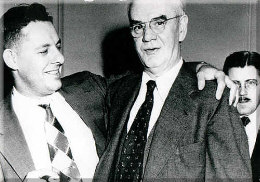
1954
Supreme Court outlaws school segregation.
First Black teacher hired in New Castle School district, John Bush.
1955
Salk polio vaccine proven effective in preventing polio. Dr. Thomas Francis head of Salk team is a local resident.
Shenango China commissioned to make plates for Eisenhower White House.
1956
Mesta moves into vacant United Engineering plant.
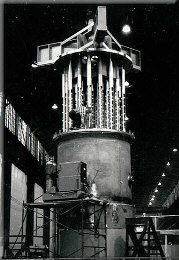
1957
McConnell’s Mill designated State Park.
1958
Shenango China sold to Sobiloff Brothers.
Cascade Park Lake reopened.
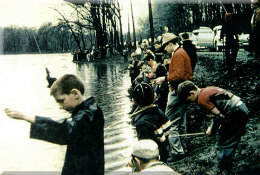
1961
Lt. Governor Brown’s house, behind New Castle High School, torn down to make practice field.
1963
President Kennedy assassinated.
Kurtz house on corner of Croton and East Washington Streets in New Castle torn down to make a parking lot.
1964
Explosion at American Cyanamid kills five.
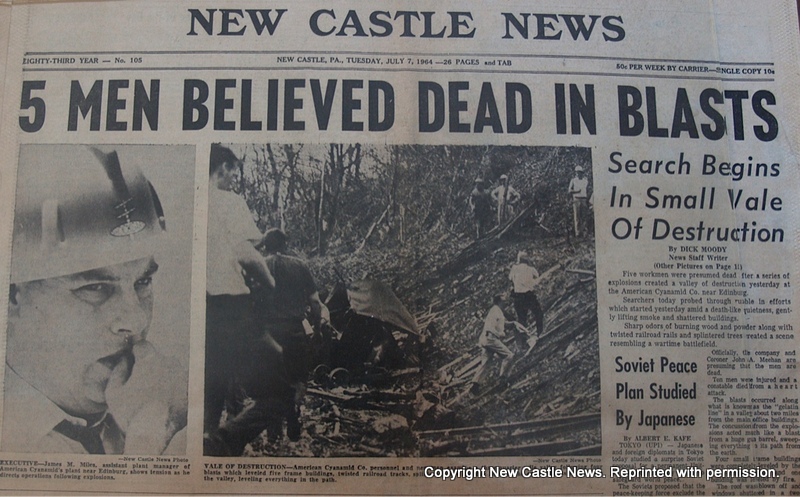
1965
Civil Rights March to Selma, Alabama turns deadly, killing local civil rights activist Reverend James Reeb.
Lt. Commander Robert H. Shumaker taken prisoner by North Vietnamese.
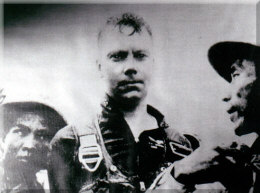
Quality Tools (Old Forge) in New Wilmington is sold to the Dowley Company.
Mr. and Mrs. Alex Crawford Hoyt donate the home of May Emma Hoyt to the Lawrence Cultural Association.
1967
New Castle native, Raymond Shafer, inaugurated as Governor of Pennsylvania.
1968
Martin Luther King, Jr. and Robert Kennedy assassinated.
1970
Ronald R. “Fat Man” Mitchell killed in drive-by-shooting.
During a time period of racial tension and civil unrest nationwide, a drive-by-shooting on the South side of New Castle, by reportedly an unidentified white male, resulted in the death of Ronald R. “Fat Man” Mitchell. It happened in front of the Rainbow Garden on Long Ave. at 12:30 a.m. on November 1, 1970.
Mitchell, a young Black resident, had safely returned home after serving in Vietnam, although wounded. He had been awarded the Purple Heart and the Army Commendation Medal. His death immediately touched off a wave of rioting that lasted two days. Around 40-50 Black people had gathered and a white couple was pulled from their car. The man was beaten and stabbed. His car overturned. In an effort to assist him, five police officers were injured. Nearly 100 store windows were smashed, firebombs were set off, and bomb threats closed New Castle High School. A state of emergency was proclaimed and curfews put in place. Mr. Mitchell left behind a pregnant wife. His murder was never solved.
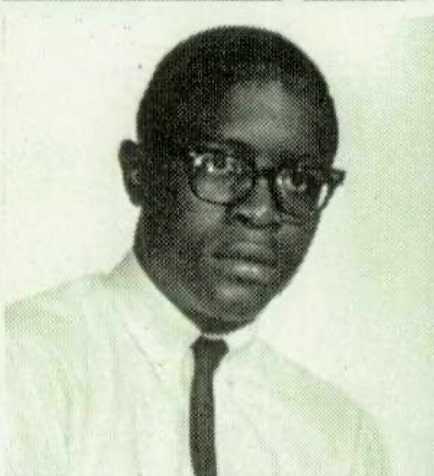
New Castle High School photo.
1972
U. S. Steel leaves Ellwood City.
1973
1975
Lawrence Savings and Trust torn down along with whole block for Washington Center.
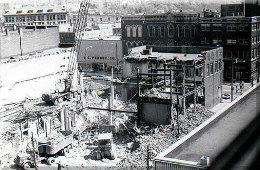
1981
Dam breaks at Cascade Park.
Johnson Bronze closes.
1987
First “Back to the 50’s Weekend” held in downtown New Castle.
1991
1993
Rockwell International closes.
Civil Rights 1950's
In the 1950’s segregation was widely accepted throughout the nation. It was required by law in most southern states which still operated under the 1896 Plessy v. Ferguson ruling of “Separate but Equal” accommodations. But by 1952 the Civil Rights movement was gaining momentum. In that year, the Supreme Court heard a number of school-segregation cases, including Brown v. Board of Education, Topeka, Kansas. In 1954 they decided unanimously that segregation was unconstitutional. In September, one small black child walked up the steps of the school house, guided by federal marshals. A disturbing picture for most Americans in the serene fifties. But there was more to come.
On September 3, 1957, a group of nine black students were kept from entering Central High in Little Rock, Arkansas, by the National Guard.
It wasn’t until President Eisenhower ordered, 1,000 paratroopers and 10,000 National Guardsmen to Little Rock, that Central High was desegregated. All through the 50’s and early 60’s the civil rights movement simmered. Led by the Reverend Martin Luther King, Jr. who did not believe in violence, the black residents of Montgomery and Birmingham took small steps toward equality.
They were helped by dedicated men and women of other races. One was Ruffles Johns, from New Castle who understood that racism was at odds with his Christian faith. He ran a clothing store in Greensboro, North Carolina, where he hired African Americans, served them in his store and spoke publicly against the ill treatment they suffered. He received threats at home. The Ku Klux Klan burned a cross on his property. His response? Fight back.
The Woolworth lunch counter in Greensboro was a popular noontime spot. However. blacks were forbidden to sit at the counter. Johns saw it as the perfect place to test the laws. He encouraged three black students to sit at the lunch counter and quietly demand to be served. With each passing day, more African-Americans came to sit at Woolworth’s. The ripples from this simple act spread far beyond North Carolina.
The Reverend James Reeb was the son of Mary Fox Rape of Ellwood City and Harry Rape of Zelienople. Mr. Rape worked in the oil field there, and eventually settled in Casper, Wyoming, where their only son James, grew up. He attended St. Olaf’s College in Minnesota and became assistant pastor at the All Soul’s Unitarian Church in Washington D. C. But he found the work too limiting. Although he was married and the father of four, he gave up his Washington duties, and took a job with the American Friends Service Committee in Boston, where he directed the group’s low income housing project. He bought a house in Boston’s Negro section of Roxbury, and sent his children to the public schools.
In March of 1965 he joined the group of protestors in a march from Selma, Alabama to Montgomery. As the marchers crossed the Edmund Pettus Bridge in Selma they were met by police and state troopers, some on horseback, with orders from Governor George Wallace to stop the march. They fired tear gas into the crowd, and severely beat protesters.
King asked anyone who could to remain in Selma for another march. James Reeb was one of many who agreed to stay. That night, he and two friends went to dinner at a black cafe. As they left the restaurant, they took a wrong turn. As they passed the Silver Moon Cafe, a hangout for whites, Reeb was hit with a club. He was rushed to a hospital in Birmingham two hours away. He was dead on arrival.
The country was outraged by the events at Selma.
A week after Reeb’s death, the federal judge ruled that the state could not block the march. President Johnson federalized the Alabama National Guard to give protection to the marchers. On August 6, 1965, President Johnson signed the Voting Rights Act into law. James Reeb stood up for his convictions. He gave his life and changed the life of many including his own family. (FBI reopens Reeb case in 2010)
James Reeb’s name was originally Rape. He changed to Reeb when he went to Washington. He is the cousin of former District Attorney Kenneth Fox.
Education 1950's
The 1950’s saw many school mergers in the county. The first was the consolidation of Slippery Rock, Scott, and Hickory Townships to make the Laurel School District. The North Beaver Mahoning. Little Beaver and Big Beaver Schools were merged into Mohawk. Ellwood merged with Ellport, and Wayne and Perry Townships. They also joined with Wampum Borough. Wilmington School District includes Pulaski, Plaingrove, Wilmington and Washington Townships. Neshannock built its own High School in the late 50’s thus ending its long association with New Castle High School. Only Neshannock, Shenango and Union have been able to survive on their own.
![]() In 1967, the Lawrence County VoTech School opened. It offers an opportunity for students to to learn a specialized skill or trade for employment when he or she graduates.
In 1967, the Lawrence County VoTech School opened. It offers an opportunity for students to to learn a specialized skill or trade for employment when he or she graduates.
With the G-I Bill men and women who had never dreamed of going to college had the opportunity to advance themselves. This was the start of the federal programs to give everyone a chance for a quality education. College attendance has continued to rise over the last four decades.
The G.I. Bill also enabled other schools to expand. Trade schools such as the New Castle School of Trades, taught returning G.I.s valuable skills which enabled them to fine a niche in the workplace. In the 150 years since Lawrence County was formed, we have gone from home schooled children to Homeschoolers. A choice many are making in response to the changing trends in education.
Health 1950's
Medical miracles are almost commonplace today. Heart transplants, liver transplants, kidney transplants all have given new life to thousands who just a few short years ago would have been doomed. Advances in vaccines and imaging, laser surgery antibiotics, even blood plasma have just taken place in the last 50 to 60 years. As the wonders amaze us, we are still seeing drastic changes in the type of health care we have grown to expect.
In the 1950’s the Labor Unions demanded health insurance and pension plans.
To maintain a skilled work force, non-union businesses, also extended insurance including dental and eye care. The access to good health care gave rise to a generation of healthy well nourished children, which in turn produced healthy children.
The health care industry and the insurance industry flourished with larger hospitals, new techniques, and more men and women who entered the medical profession.
The economic downturns of the 70’s & 80’s changed everything.
Health care benefits were trimmed. Many full time employees were dismissed and replaced with part-time workers, who did not receive any benefits. Hospital costs resound the number of uninsured doubled. Most Americans are now covered by H.M.O’s. They decide what doctor you will see, what surgical procedures you can have, and what hospital you can be admitted to and for how long.
Major epidemics are again walking the land. Aids, E-Cola, virulent virus and bacteria immune to the wonder drugs are being discovered. We have felt safe for so long, many families had neglected to have their children immunized or forgotten to have booster shots. Epidemics of measles have closed college campus, and panicked communities.
- What lays ahead for the medical community?
- Will there be government intervention in the heath care industry?
- We hear of hospitals going bankrupt. Will that be the wave of the future?
WAR - Korean Conflict
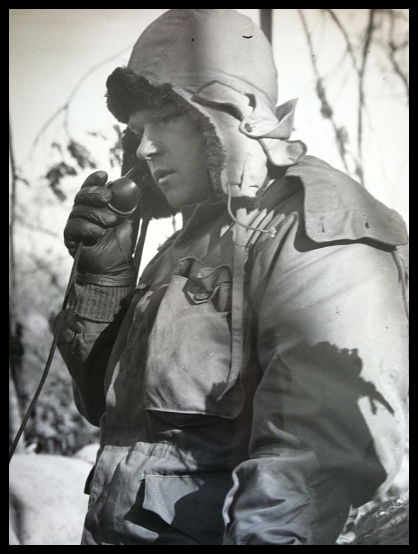
Michael D. Banko, Jr.
Michael D. Banko, Jr. is probably Lawrence County’s most decorated Korean War veteran. Among his medals and citations are the Silver Star, the Bronze Star with two combat V’s, the Purple Heart and eleven other ribbons and medals.
Banko enlisted in the Marine Corps in 1950 and was sent to Korea. He was wounded at Wosan Harbor on North Korea’s east coast. There he was picked up and placed in a helicopter by Donald Capots, a West Pittsburg neighbor, and was transferred by ship to Japan for recovery.
Capots, who lived just four doors away back home in West Pittsburgh, joined the Navy in 1948 and was trained as a corpsman. Assigned to the Marines in Korea, he spent six months on the front lines assessing injuries to determine which were severe enough to warrant helicopter evacuation for treatment. Like Banko, he was highly decorated. Because he was trained in underwater demolition, Banko was returned to Korea. Underwater demolition was critical to the securing of beachheads on the Korean Coast.
Banko was with the 1st Marine Division at Iwon near Chosan when 200,000 Chinese soldiers crossed the frozen Yalu River from Manchuria. There, in sub-zero temperature, he received a concussion and an arm wound and was temporarily blinded and deafened by Chinese artillery fire.
Photo of Mike Banko at the front in Korea. Photo courtesy Mike Banko.
Roll of Honor Korean Conflict
3,200 served • 21 did not return
John Lewis Bartberger
John Robert Bonzo
Gerald R. Book
Walter George Burns
Jerry F. Carothers
Paul Cahall Flower
William R. Francis
Gerald W. Glasser – (Ellwood City Ledger article)
Dan Bruno Hawke
Merle Allan Henderson
Walter J. Hoover
Sam Ierino
Davis W. Jones
William Glenn Lewis, Jr.
Louis R. Masters
Dominc N. Scocchera
Edward D. Strocky
Ralph W. Taylor
John Walzak
Roy William Welsh
Robert H. Witherspoon
WAR - Vietnam 1950-1998
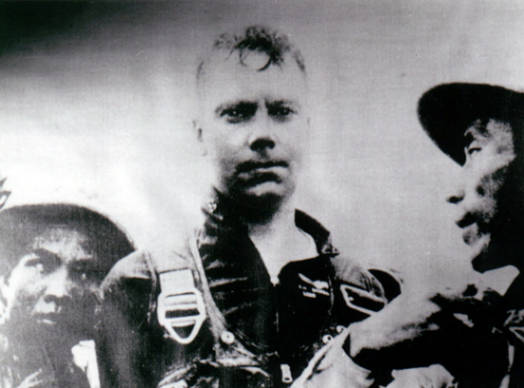
Lt. Cmdr. Robert H. Shumaker
Lt. Cmdr. Robert H. Shumaker, a Wilmington Area High School and U.S. Naval Academy graduate, trained as a Navy pilot. On February 11, 1965, his F-8 fighter plane was downed shortly after takeoff from the carrier USS Coral Sea. His back injured in his parachute landing, he was captured in a field by enemy soldiers. Loaded on an open truck, he was driven 300 miles to Hanoi. At stops in tiny villages along the way, he was paraded, stoned and abused. In a propaganda attempt, his guards brought him to a news conference with fixed bayonets, but he exhibited only defiance, and as the Tass News Agency from Dong Hoi said, “He showed no signs of remorse.”
The San Diego Evening Tribune commented February 15, 1965, that the correctness and courage with which the captured U.S. Navy pilot conducted himself during a press conference in North Vietnam should be a source of pride and inspiration to all Americans. The paper went on to say it is one thing to stand firm for the principles of truth and honor when one is in the company of upright and honorable men, but it is quite another thing – more demanding of character and fortitude – to stand by what is honest and true in the midst of one’s bayonet-armed enemies.
Kept in leg irons in a tiny cell, he was frequently tortured. He and 10 other POWS considered resistance leaders referred to themselves as the “Alcatraz 11.” They spent nearly three years in solitary confinement. After eight years, he and 142 other Americans were released February 11, 1973. He was reunited in San Diego with his wife Lorraine and his son Grant, just six weeks old when his father was shot down. Shumaker was promoted to rear admiral in 1985 and is now retired. He holds the following decorations: Distinguished Service Medal, Silver Star (2), Legion of Merit (4), Distinguished Flying Cross, Bronze Star, Purple Heart and a number of others.
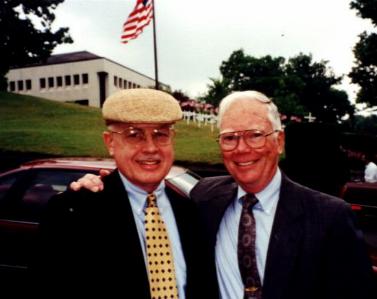
The TAP CODE
Bob Shumaker, a Vietnam veteran and former POW, shares his remarkable story of resilience in THIS EMOTIONAL LIFE (PBS air date Jan. 4-6, 2010). “Shumaker, a former POW in Vietnam, describes how he and his fellow prisoners developed a social network that was crucial to their surviving three years in solitary confinement. They succeeded by creating a tap code that allowed them to communicate through their cell walls. [This Emotional Life]”
To read more about Shumaker, visit these links:
- Vietnam, Iraq Vets Recall War Experiences (US Department of Defense) [the DOD website is under revision. The link we were provided is no longer working: http://archive.defense.gov/news/newsarticle.aspx?id=56670]
- Valor Awards (Military Times Hall of Valor)
- Wikipedia listing
- The Tap Code (PBS)
- Podcast (Dec 11, 2019). Runtime 42 minutes. RFT 350.1 Remix Admiral Robert Shumaker
Vietnam War’s first Lawrence County draftees called up 50 years ago
“And 1965 was the year the Vietnam War started for many Lawrence County residents and their families. On Oct. 22, the first group of Lawrence County draftees were inducted into the military through the Selective Service draft process.” [Elwood City Ledger: Nov 9, 2015]. Click here to read the complete article.
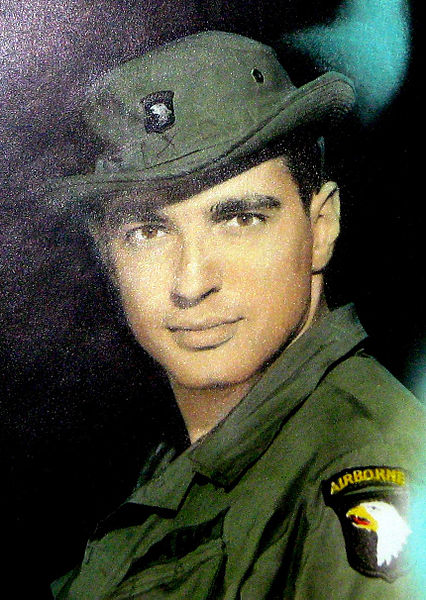
Specialist 4 Leslie H. Sabo Jr.
On May 10, 1970, Sgt. Leslie Halasz Sabo Jr. of Ellwood City was killed in Cambodia during the Vietnam War. He was awarded the Congressional Medal of Honor, the U.S. military’s highest decoration for combat valor, 42 years after his death.
Spc. 4 Leslie H. Sabo Jr. is shown during his tour with Company B, 3rd Battalion, 506th Infantry, 101st Airborne Division (1969).
To read more about this remarkable soldier, visit our blog post
Roll of Honor Vietnam War
4,500 Lawrence County Residents Served
36 did not return
Dennis Ralph Baker
Paul William Bush
Richard J. Callahan
Lawrence A. Cervone
Francis Craig Cleaver
Vaughn Leroy Dexter
Francis David Donohue
John R. Dripps, Jr.
Ronald Fair
Alexander J. Gabriel
David John Gamble
Dalton Truro Goff
William Anthony Grist
James P. Habib
Alfred Floyd Hall
James G. Heckathorne
Richard Whan Hopper
Theodore R. Klingensmith
Joseph A. Listori
Daniel Clyde Lykins
David K. Mc Beth
Earl Paul Mc Bride
Robert D. Macri
Craig Noan May
Paul Renato Peluso, Jr.
Delmar Wayne Probst
Larry Bruce Reed
Nathaniel Julius Riley, Jr.
Augustine Daniel Russo
Thomas Peter Russo
Lesley Halasz Sabo, Jr.
Richard Lee Scaduto
Vincent Anthony Scungio
Charles Leroy Slack, Jr.
David Francis Smith
Ronald W. Smith
George Edward Threats
Robert John Wills
